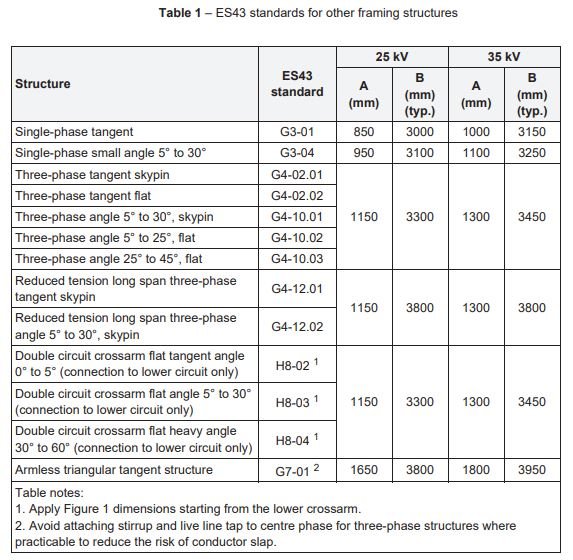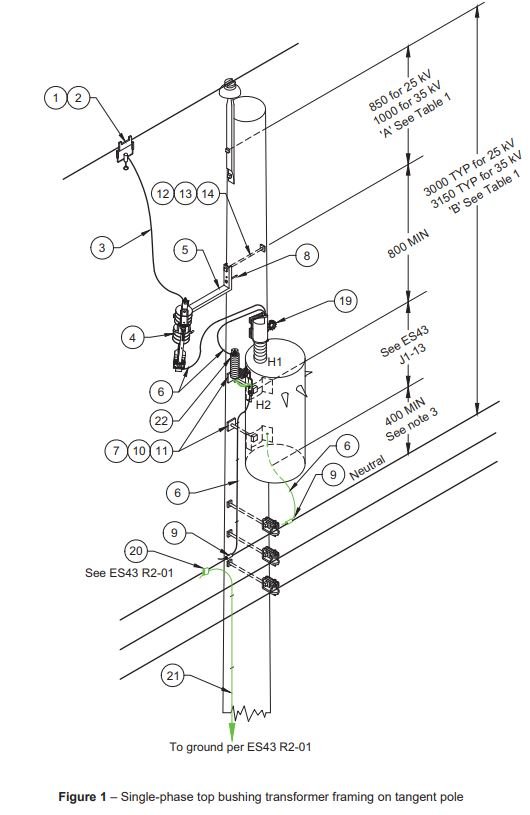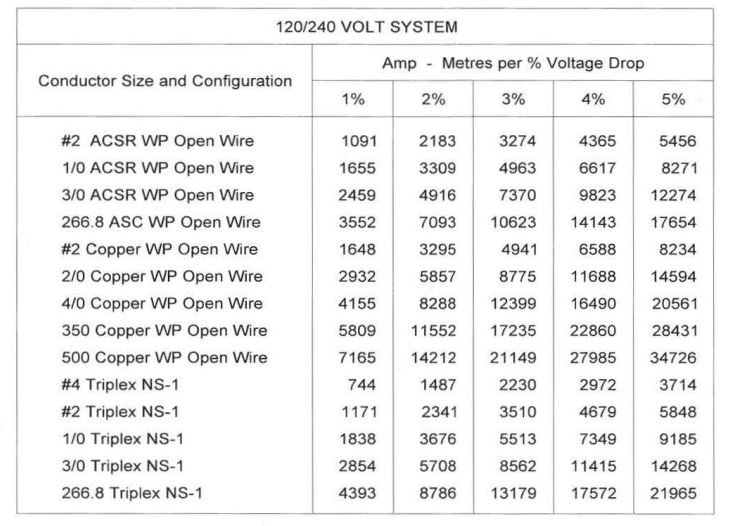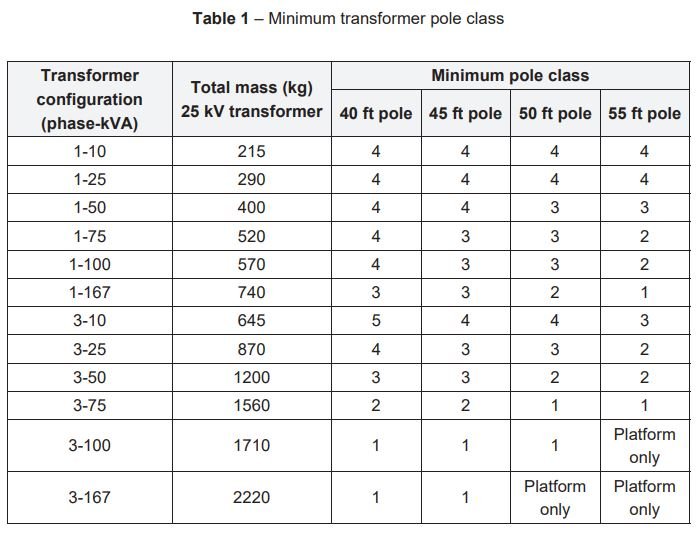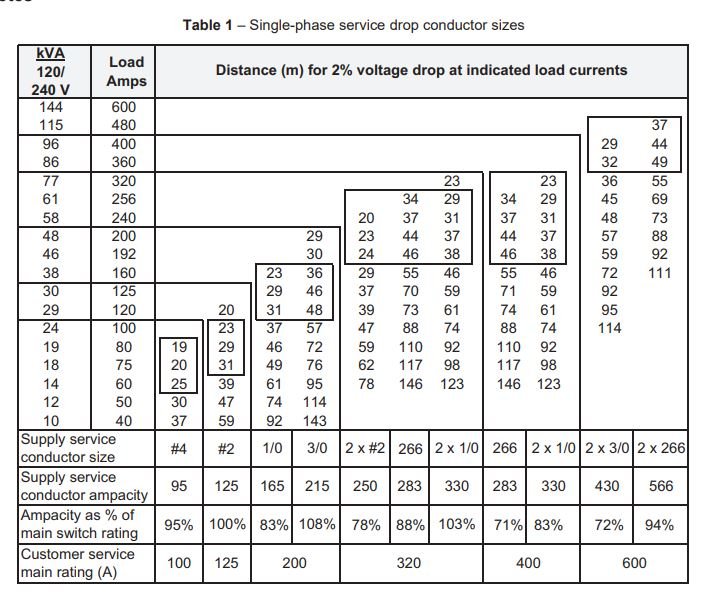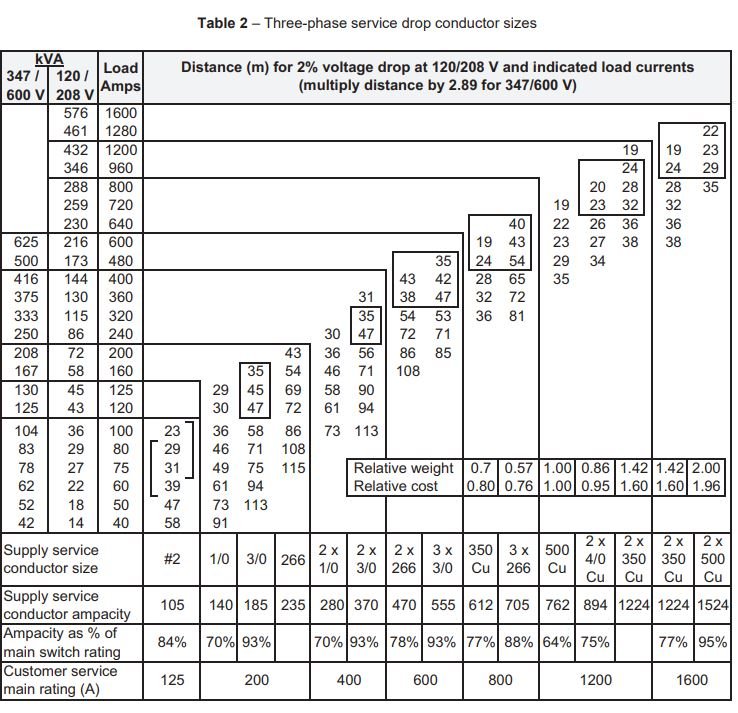ES43 B1 – Distribution Pole Attachments - clearances for attaching equipment to distribution poles.
Bellow are some of the key types of clearances that must be adhered to during OH distribution construction.
Mandatory Minimum Clearances: Specifies the minimum clearances, separations, and spacing that must be maintained between electric power conductors, communication lines, span guys, foreign objects, and the ground under specified conditions.
-
Vertical Clearances: Aligns with CSA Standard C22.3 No. 1-10, considering maximum design sag due to ice-loading or thermal expansion.
-
Horizontal Clearances: Also based on CSA Standard C22.3 No. 1-10, accounting for maximum design swing of conductors or wires.
-
Private Property: Conductors over private property must conform to the Canadian Electrical Code (CSA Standard C22.1).
-
Highways: Clearances within Ministry of Transportation & Infrastructure rights-of-way adhere to the Utility Policy Manual.
-
Navigable Waters: Clearances are subject to Transport Canada regulations and specified in individual crossing permits.
-
Gas/Propane Tanks: Conductors must not pass over gasoline pumps or propane tanks over 7,600 litres capacity; primary conductors should maintain a 7.6 m horizontal distance.
-
Secondary Conductors: Practical clearances may be influenced by pole attachment heights needed for required service clearances.
-
Joint Use Poles: Minimum clearances and attachment heights are dictated by provincial and national regulations, the BC Hydro/TELUS Joint Use Agreement, and the Joint Use Coordinating Committee.
-
Over-Height Vehicle Clearances: In areas with large farm machinery or logging equipment, additional vertical clearances may be required to accommodate vehicles exceeding 4.15 m in height.
-
Transmission Line Clearances: Consultation with Transmission Engineering is necessary for transmission line clearances.
-
General Notes: Additional considerations include allowances for varying operating conditions, weather, future changes, and terrain profiles to ensure safety and compliance.
Clearances above ground for low voltage services (ES43 B1)
All clearances shown bellow apply to services connected to a service mast. Note services connected to the side of the building follow the ES43- N2-02 and N2-06.

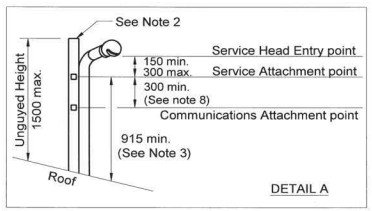
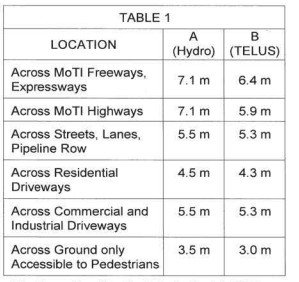
ES43 Joint & Secondary use (Telus & other similar)
This standard mainly applies to BC Hydro & Telus work. It is not likely to be used for residential service request.
- Joint Use Standards: The documents outline standards for joint use of poles by BC Hydro, TELUS, and third-party communications licensees.
- Agreements: Joint Use Agreements between BC Hydro and TELUS govern pole ownership and usage.
- Coordination: Joint Use Coordinating and Technical Committees address administrative and technical issues.
- Line Design: Construction of joint lines must suit both parties, with communication and coordination being essential.
- Anchoring: Separate anchors may be needed for power and telecommunications equipment.
- Vertical Separation: Specific vertical separation distances between power and communication wires are required for safety.
- Equipment Boxes: Third-party equipment box installation is subject to review and acceptance by BC Hydro or TELUS.
- Mounting: Communication equipment boxes should be mounted on the pole face, away from climbing space.
- Wire Spacing: Standards define wire spacing below the neutral on joint-use poles.
- Attachment Height: Minimum attachment heights vary based on road type and span length.
- Vertical Wire Separation: Tables specify vertical wire separations between BC Hydro and TELUS conductors.
- Strand-Mounted Antennas: Guidelines cover the design, installation, and clearances for strand-mounted antennas.
Wire Spacing on Joint-Use Pole Below the Neutral
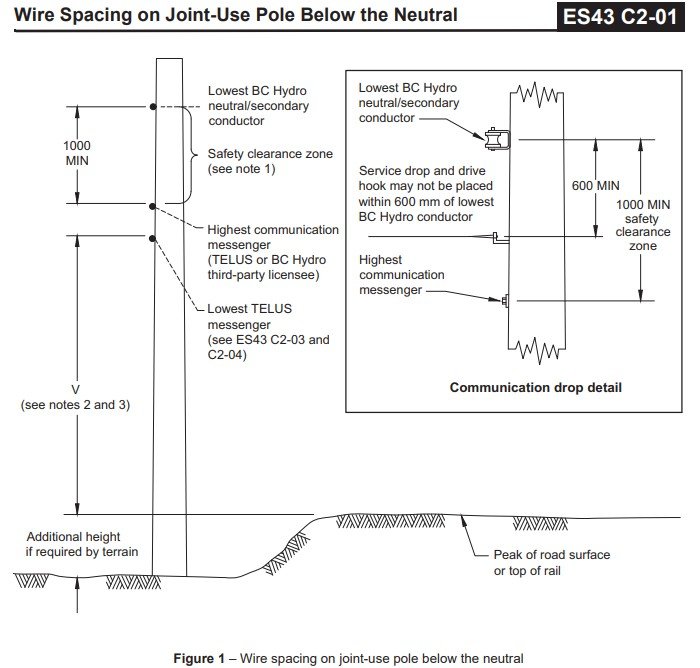
ES43 Section N - Secondaries & Services
ES43 N1 – General” document focuses on minimum clearances for secondary and service conductors. It outlines specific vertical and horizontal clearance requirements from the ground, buildings, and other objects based on voltage levels, location, and type of service. It also notes that these clearances align with CSA standards and BC Hydro safety policies to ensure safe installation and operation of electrical distribution systems. Some of the key diagrams that residential customer should be aware of are displayed bellow.
ES43 N2- SERVICE CONNECTIONS SINGLE & Multiple Parallel Multiplex Services
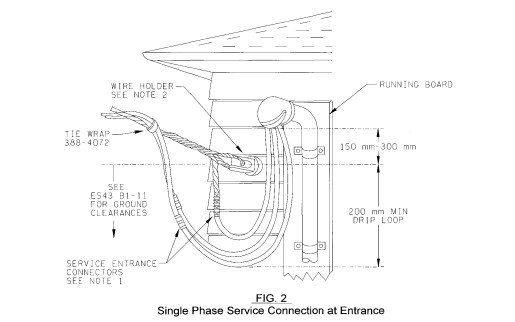

SERVICE CONNECTIONS - SINGLE PHASE (400 A 120/240 V) TO SERVICE CLOSET OPTION

ES43 R2-01 – Bonding and Grounding Ground Electrode Installations Ground Rods at Wood Poles
Summary of key aspects are as follows:
-
Purpose: Establishes guidelines for installing ground rods at wood poles and multiple ground rods to ensure proper grounding and safety.
-
Ground Wire Connection: Specifies that the grounding wire from the overhead neutral to the ground rod must be continuous to maintain electrical integrity.
-
Connection to Neutral: For ACSR neutrals, the standard connection method is illustrated; for copper neutrals, the galvanized steel wire should be connected above the neutral.
-
Equipment Bonding: All equipment bonding and grounding above the overhead neutral must comply with ES43 Section R standards.
-
Stapling Conductors: When attaching theft deterrent conductors to poles, plastic bridges should be removed from staples to ensure secure fastening.
-
Ground Rod Placement: Ground rods should be installed at a minimum distance of 3.0 meters from the pole to ensure effective grounding.
-
Allowance for Settlement: A 0.5-meter dip should be left in the grounding wire to accommodate potential differential settlement.
-
Pole Space Allocation: A minimum of 200 degrees of free pole space at ground line is required to facilitate possible future pole replacements.
-
Riser Placement: The installation of communication and power risers on the same pole should be avoided where practicable to prevent interference.
-
Quadrant Allocation: Communication cables and power cables are not permitted to share the same quadrant on the pole to maintain safety and organization.
-
Alternate Locations: If a communication pilaster is not permitted to project past the roadside of the pole, alternate locations should be used, rotating quadrants accordingly.
-
Reference Drawings: The document includes diagrams illustrating preferred and alternate configurations for grounding installations at wood poles.
These guidelines are intended for use by personnel working with or for BC Hydro to ensure consistent and safe grounding practices in the installation of ground rods at wood pole
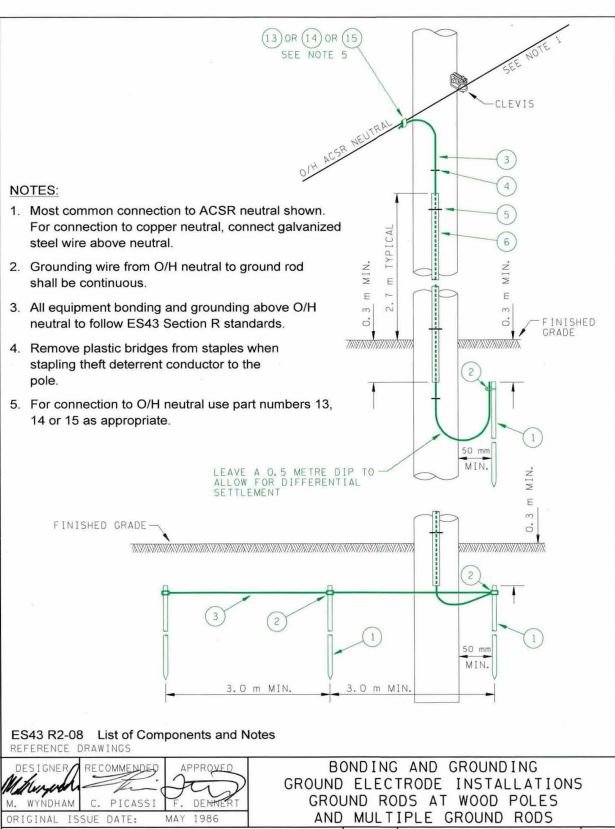
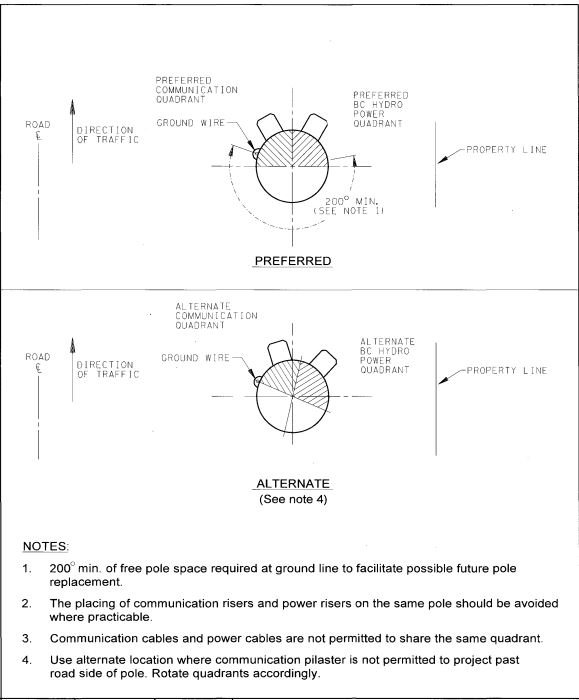
ES43 - Other
